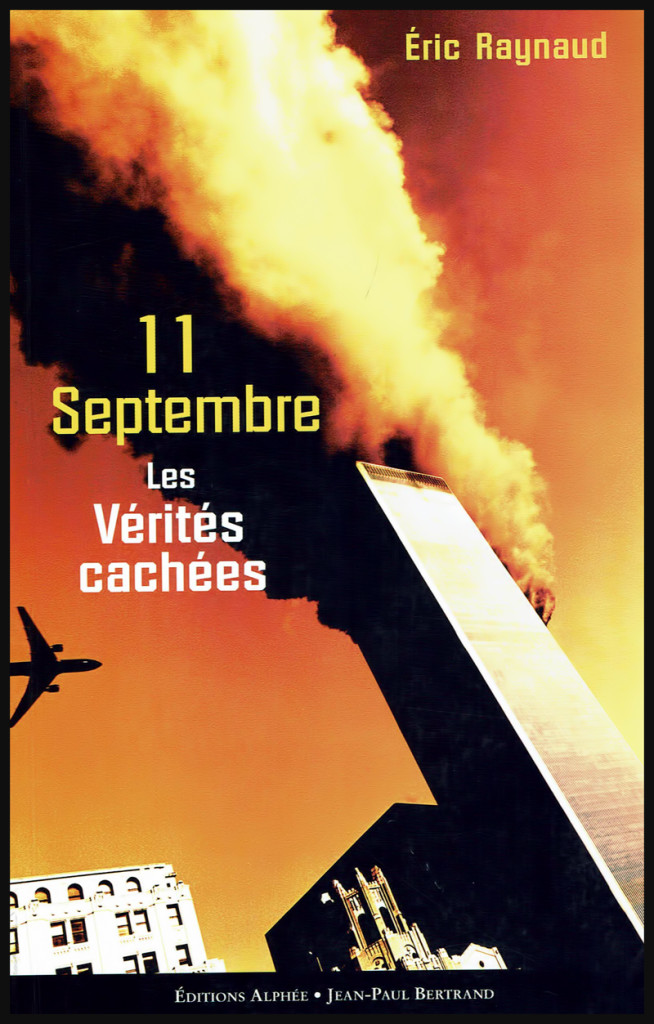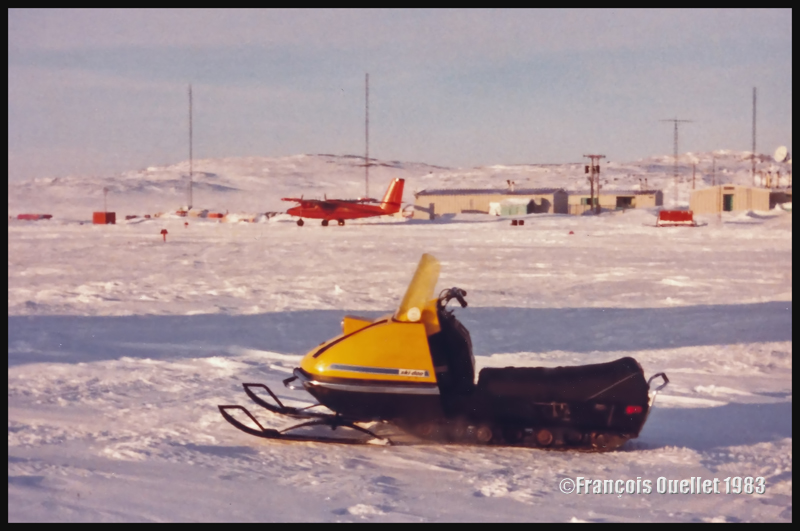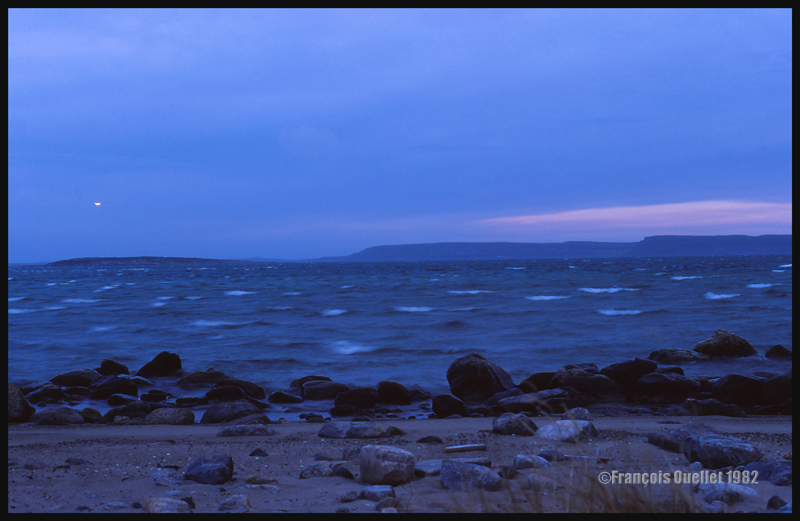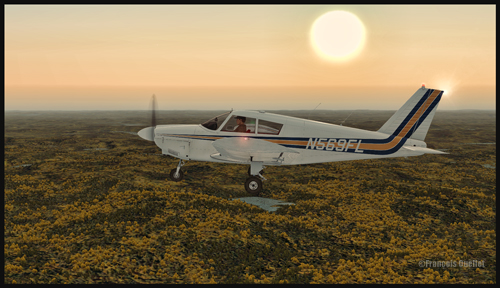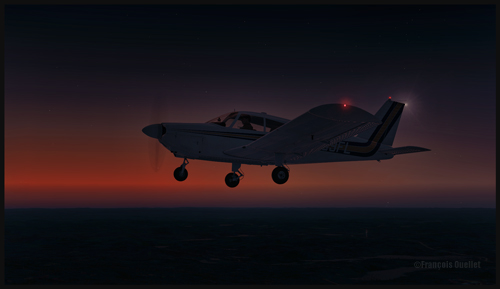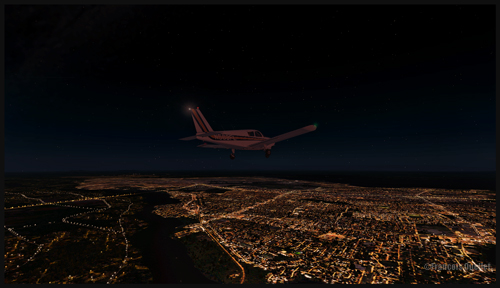11— Septembre : les vérités cachées (September 11 – The Hidden Truth)
For those of you who are bilingual, here is an interesting book analyzing the September 2001 events. Two planes went through the Twin Towers. We have seen those images over and over again. A Boeing 757 crashed into the Pentagon. At least, that is what has been reported since 2001. I knew that I would eventually see live footage of the plane hitting the building, and pictures of Boeing 757 parts, like it is always the case with crashes around the world. With tens of cameras surrounding the Pentagon and the nearby buildings, and reporters on site, there were surprisingly neither credible pictures nor videos showing 757 parts. Years went by, and nothing popped up. That raised my curiosity.
I knew that it was in the American government’s interest to show photos or videos of the plane, like it did for the Twin Towers. But with the Pentagon, there was nothing. We could obviously see a small hole in the building, but nothing else. I wanted to learn more about those attacks and, among all the documents and books that I read, there was this book written by Éric Raynaud.
Éric Raynaud is an investigation journalist who has written about important personalities like Ingrid Betancourt, Benazir Bhutto, Pierre Bérégovoy and others. He has worked for twenty years for daily newspapers before becoming an independent journalist. In his book titled “11-Septembre: les vérités cachées”, the author aligns facts, studies and verifiable testimonies that can be confirmed by the reader. He provides, at the bottom of pages, his sources and original references to all the medias. That includes books, interviews, newspaper articles, TV programs, videos and multiple internet sites.
Here are some of the subjects that the reader will find in the book. I can only present them very briefly here:
Pentagon: identification of the parts found on site
The author says that [my translation]:“the Commission of inquiry established that only part of one engine was found, and that it presented, as a proof, a totally inadequate picture”. It was not a part of a 757 engine but something else. A clue is given through a citation from Barbara Honegger (former advisor in political analysis to the United States President, between 1981 and 1983) during an interview [my translation]: “Some parts found in the Pentagon have been identified as compressor pieces that are part of a turbo JT8D engine, used for the A-3 Sky Warrior fighting aircraft […]”.
Pentagon: where is the Boeing 757?
There are many other sources of concern, like the obvious lack of important pieces. Their absence is noted, without any given explanations. Bob Pugh is a reporter with twenty-five years of experience and he is the first reporter to arrive on site, five minutes after the firemen. When he is interviewed by other medias on what he just saw, he declares [my translation]: “I look for significant parts, for the aircraft’s wreck, I do not see anything that I can recognize…I don’t see the tail. I don’t see the wheels. I don’t see the engines. There are no seats…there is no luggage.” The author writes [my translation]: “nothing has been found that would even look a bit like airliner parts”.
Pentagon: no serial numbers, no landing gear, no 757 engines
George Nelson, a Colonel in the US Air Force, has a direct experience as an investigator in aircrafts accidents. He declares that a fire resulting from an airplane crash cannot destroy every significant piece like the landing gear or the engines; neither can it make all the serial numbers disappear. He says [my translation]: “I repeat: this is impossible […]. Any objective and rational investigator would only be able to conclude the following: no Boeing 757 hit the Pentagon, as opposed to the official statement”.
Pentagon: depleted uranium detected on the site where the building was damaged.
Another surprising discovery was made by two scientists, Leuren Moret and Janette Sherman. Leuren Moret spent her career in the nuclear field, working among other places in California in the Livermore Nuclear Weapons Laboratory . She says [my translation]: “What happened at the Pentagon appeared highly suspicious to me. That led me to contemplate the use of a missile fueled by depleted uranium, and to make an immediate research with my colleague and great friend, Dr Janette Sherman. Janette went to take radiation measurements using a Geiger counter, a very short time after the crash. From fifteen kilometers, under prevailing winds from the Pentagon, she detected radiations that were eight to ten times higher than normal…” They learned, only four years later, that other experts had also detected similar levels where the Pentagon had been damaged.
WTC7 (building 7): bombs explode in the lower floors.
Numerous witnesses heard powerful explosions in the basements of the two towers (WTC1 and WTC2) and in the building 7 (WTC7), all while the Twin Towers where still standing.
Barry Jennings, the Assistant Director of the Emergency Services Department of New York was trapped in the superior floors of the building 7: he could no longer go down since the lower floors had been blown away. He declares [my translation]: “Once we arrived on the sixth floor, the level supporting the stairs we were about to use had disappeared! There was an explosion and the floor disappeared…the whole level had given in. I found myself there, suspended in the air! I had to climb back to go up to the eight floor…the explosion happened just beneath us…and when it exploded, we were projected backward…and the two buildings [the Twin Towers] where still standing…we were trapped there for hours. I was still there when the towers went down”.
This capital witness died two days before he was scheduled to testify. His testimony would have contradicted the main version. The Commission of inquiry, across its six hundred page report, does not mention the WTC7 name.
Twin Towers: bombs explode in the basements.
William Rodriguez, an employee with twenty years of experience, was at the B1 level of the WTC1 tower. He says that there were six basements, called B1 to B6. There was such a powerful explosion between B2 and B3 that they were lifted off the floor. Soon after, they heard another BOUM and it was the plane arriving in the tower. Many other testimonies, also visible on videos, show the employees and firemen reacting in surprise toward the series of explosions that they were able to hear.
How were the Twin Towers built?
Nine months before the attacks, one of the designers of the towers, Franck Martini, explains how the Twin Tower’s construction was thought through. He knew that there had already been a crash against the Empire State Building during the Second World War. A bomber, lost in fog, had hit the building straight on (a building that stayed up). Now knowing that a passenger jet could mistakenly hit the new towers that would be built, he explains [my translation]: “the steel networks structure is built as “mosquito screen”. A plane colliding with the towers would have the same effect as a pen going through a mosquito screen: the hole stays, but the global structure around it does not change. The Twin Towers (WTC1 and WTC2) are conceived to resist the impact of an airliner, even many…”
And if the architects had planned the possibility of one or more impacts against their new towers, they also knew that once the crash would occur, the fuel would start burning. There is no surprise here.
The steel’s melting point.
Steel melts at 1538 Celsius degrees. According to Thomas Eagar, teacher of material physics at the renowned MIT, a kerosene fire generates temperatures between 870 and 930 degrees. The author declares [my translation]: “In 2008, an engineer who participated in the FEMA inquiry admitted that even their studies could not demonstrate with absolute certainty that the [Twin Towers] fires had generated temperatures higher than 300 or 400 degrees […]”.
The abnormal falling rate of the buildings
The towers went down at free fall speed. Between 9 and 10 seconds, according to observers; this is totally impossible without the use of accelerators. The most pessimist scenario, applied to the “pancake theory” collapse, requires a minimum of 21 seconds… The author writes [my translation]: “Numerous expert calculations hover around thirty to forty seconds”.
Kevin Ryan, from Underwriter Laboratories, a well-known institution in USA, says this [my translation]: “We tested the floor very well, by means of faithfully reconstituted models, in August 2004”. These tests totally refuted the main theory, the “pancake theory”.[…] Months later, the government published an update on its own conclusions, indicating not only the absence of the floors collapsing but also that examinations of the areas touched by fire proved that the temperatures…were very low”.
We are then back to the unexplained free fall. Or even the multiple unexplained free falls. Such gigantic buildings crashing down 1) totally, without leaving major parts standing 2) in a perfectly vertical way and 3) at free fall speed are sure to attract the attention and comments of experts in controlled demolition. On this subject, there are lots of testimonies.
In 2009, a crucial discovery from Danish scientists radically modified the main version.
2009: Niels Harrit and the nanothermite
In 2009, an internationally renowned scientific researcher, Niels Harrit, writes an article in the Open Chemicals Physics Journal. This magazine’s editorial team is composed of one hundred scientists coming from five continents. The article, which is written in collaboration, is titled: “Active Thermitic Material Discovered in Dust from the 9/11 World Trade Center Catastrophe”. They are nine scientists to announce that they have discovered nanothermite, a new and extremely powerful explosive, in the World Trade Center.
[My translation]: “According to what we choose to do with it, it can be an extremely powerful explosive, or it can melt metal at high speed.” Thermite has been known for a long time, but nanothermite is much more recent. The more the mixture is refined, the more it is powerful [my translation]: “ Activated to melt steel, for example, nanothermite will only take a fraction of a second to pass from the ambient temperature to 2500 degrees…steel, itself, melts at a little above 1500 degrees. I let you conclude…” The author finally understands [my translation] “the pockets of molten metal that were found in the Twin Towers debris and in WTC7, that New-York firemen took two months and a half to definitely neutralize”.
We then learn that nanothermite is [my translation] “made under license, to the exclusive use of the army and under the seal of secret defense”. The author refers to an interview given by Niels Harrit where the scientist says that ten tons of nanothermite are needed to cause the fall of the towers. And how is it possible to bring ten tons of that product in a place with such tight security? He writes that the company in charge of the security had for society director the President Bush’s brother and as general director the President Bush’s cousin.
It is possible to see the interview on You Tube.
Obstructions made against the Congress inquiry
The senator Tom Daschle complained several times, and on many different medias, of obstruction problems he was facing from Dick Cheney and from President Bush, that were asking him no to investigate and even to stop the Congress inquiry.
The money allotted to the new 2004 independent Commission of inquiry.
The author notes that in order to understand everything about the sexual scandal involving Bill Clinton, 100 million dollars were spent. In order to know what happened on September 11 2001, the Commission of inquiry was given 3 million dollars. It is only after multiple complaints that this amount was finally reviewed to 14 million. Three thousand American lost their lives in that tragedy but a battle was necessary to get more than three million dollars…
The facts discarded by the independent Commission of inquiry.
The Commission seems to have found an easy way to deal with the most troubling testimonies: when this happens, instead of writing the details in the report and risk raising even more troubling questions, the subject is simply avoided. There is nothing written. So, in 600 pages, there is no mention of WTC7 whose lower floors were destroyed by explosions even before the planes arrived in the towers.
Nothing can be found about the Minister of Transport Norman Mineta’s testimony as to what he saw and heard with regards to Dick Cheney before the attacks. Mineta was nonetheless a direct witness; he was in the room with Cheney. Éric Raynaud cites what Mineta said and it is obvious that if those words would have found their way in the Commission’s report, this would have created a crisis.
There have been multiple testimonies received by the FBI as to the fact that something smaller than a B757 hit the Pentagon. Nothing can be found on those testimonies in the Commission’s report.
On that subject, you can read a Washington Post article dated from August 2, 2006 and signed by Dan Eggen: “9/11 Panel Suspected Deception by Pentagon Allegations Brought to Inspectors General”. Another book written on the subject in 2009, whose author, John Farmer, is a former General Attorney of the New Jersey State, is available: “The Ground Truth: the story behind America’s Defense on 9/11”. He says [my translation]: “The public has been seriously duped with regards to what happened on the morning of the attacks”.
Cases of insider trading
Numerous cases of insider trading were detected, starting September 6th, which is five days before the attacks. They involved “put option” to sell United Airlines, American Airlines, as well as reinsurance giants like Munich Re and AXA and financial companies that would be impacted within a few days like Morgan Stanley, Merrill Lynch, Bank of America, etc. However, enormous amounts of shares were bought on Raytheon, a military armament producer, just before the attacks. There was an inquiry, but no details were released.
The Osama Ben Laden case
The book’s chapter 8 holds surprising details about Osama Ben Laden. This information, that most of us ignored, brings a new light on what is generally known about him. It is said that Ben Laden rapidly denied being involved with the attacks. Normally, an attack is quickly reclaimed with pride by its mastermind. It is not the case here. I remember having seen Ben Laden on the news at the moment where he was saying that he was not behind the 9/11 attacks. Some details are given in the Éric Raynaud’s book as to why Ben Laden was not behind those attacks.
On this subject, the reader might, for example, take note of Bénazir Bhutto’s testimony, the woman coming back to Pakistan with the intention of running her own country once more [my translation]: “Osama Ben Laden has been killed by a former member of the Pakistani secret services, Omar Sheikh”. This link was available on dailymotion.com. The Omar Sheikh name often surfaces when the 9/11 attacks are concerned.
A few weeks after she confessed what she knew about this delicate subject to Al Jazeera in 2007, Bhutto herself was killed. She was not the only one to have publicly spoken on that subject. A former very high ranking CIA manager, David Baer, also confirms to Persian CNN, in 2009, that [my translation]: “ Ben Laden died many years ago, and videos and sound recordings that are episodically broadcasted are obviously false…” (www.persiancnn.com).
This book reports that the Dalle Molle Artificial Perceptual Intelligence Swiss Institute studied the messages supposedly recorded and sent to medias by Ben Laden throughout the years. The result [my translation]: “None of the recordings provided by the CIA or Al Jazeera correspond to the real voice of Ben Laden”.
United 93
Few pages are dedicated to the United 93 flight, which in itself was an issue that has given rise to many comments. We read about visual witnesses who see an aircraft explode in flight. The official story is also presented, which says that the aircraft crashed in a field. [My translation]: “The big, the huge problem, is that the rescuers, firemen, witnesses, and even the Shanksville mayor, who arrived quite rapidly on the site, effectively found a crater, but…absolutely empty”.
I’ve been interested in aviation all my life. Wanting to understand as soon as possible what had just happened, I had rapidly watched the live news and videos released by the media. At the time, it was not yet a question of conspiracy. News reports were live and journalists were doing their best to describe the scene. It was quite something to see a nearby farmer, who had rapidly gained access to the site. He was certainly anticipating, like everybody, to find many dead people here and there around the site. But he was talking to the camera and saying that there was nobody. He did not understand how it was possible.
It was also something to hear that reporter, on board a news helicopter, trying to describe what he was…not seeing. The helicopter’s camera was pointing to the site where the crash supposedly happened. All the viewers could see the scene at the same time as the reporter. But there was almost nothing to comment about. We could not see anything that would look like something we are used to see when there is a crash. And God knows we’ve seen a lot throughout the years. The reporter was unsure, he was improvising to kill time.
Conclusion
Through all the quotations and references offered in the book, among which some of David Ray Griffin, the author wants the reader to understand the following facts: in order to maintain its global domination, the United States needed to control the vast oil reserves of Central Asia. In 2001, there was a meeting between American and Taliban representatives. The Americans wanted to build an oil pipeline and needed the consent of the Taliban. This project having been refused by the Taliban, the latter were advised that a war would be started against them in October 2001. But a war lead by USA in a foreign country needed the strong support of the American population. In order to gain that kind of support, many neoconservatives like Zbigniew Brzezinski and Philip Zelikow had underlined, over different decades, that a new “Pearl Harbor” would be necessary.
What I understand of the book is that an attack without a very strong visual impact would not mobilize the American population and ensure that the latter would support a war in a foreign territory. Airplanes crashing in the Twin Towers, but more importantly the towers crumbling down would constitute this new “Pearl Harbor”. The freefalling towers would be played and replayed by all the media, reinforcing the desired impact.
But there had to be a certainty that the towers would both completely come down to reach that visual impact. The majority of viewers would certainly not notice that the buildings were all freefalling.
But there was nonetheless a major obstacle: the towers had been built in such a way that many airliners could hit them without destroying them totally, due to the “moustiquaire” design. Added help was required. And this is why there are so many testimonies, from firemen and workers that were present in the buildings, of multiple explosions in the buildings, down to the basements, and this just before the planes hit the buildings. Nobody expected the 2009 discovery of nanothermite in the Twin Towers ashes made by Niels Harrit and his team of scientists. This nanothermite created molten steel. It transformed steel into a metal softer than butter.
To suggest that Ben Laden was still alive, even though his death had been announced by many political personalities and intelligence sources, led the American public to concentrate their attention on a number one public enemy. There was no more moral dilemma to authorize military attacks in Afghanistan, supposedly to kill the perpetrators of the 9/11 attacks. The promised war against the Taliban was now a reality. They did not support an oil pipeline controlled by the Americans and they paid the price for a while.
The reader has to decide what to make of that information. As a controversial subject, I could not find a better one. If you want to look deeper into the subject, there are many books available. Other than Éric Raynaud’s book, published in French, there is no doubt that David Ray Griffin’s analysis and research, initially published in English, might surprise you. The title is: 9/11 Contradictions – An Open Letter to Congress and the Press (ISBN: 978-1-56656-716-9). There are also many documentaries on the subject, among which the well-known video, available on You Tube: 2014 New Loose Change 3rd Edition.
September-11 attacks are the only event in which it is not acceptable to be curious. Here, there is only black and white. You are either on the government side, or you are an advocate of conspiracy theories. Like Bush would put it: “You are either with us, or against us”.
Title: 11 — Septembre : Les vérités cachées
Author : Éric Raynaud
Éditions Alphée /Jean-Paul Bertrand
Copyright 2009
ISBN: 978 2 7538 0481 4
(www.editions-alphee.com)
